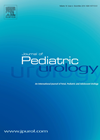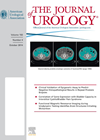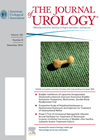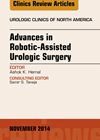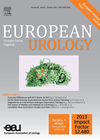
Journal Reviews archive for 2015
Refluxing ureteral reimplantation
Obstructed megaureters may be managed with temporising stents, cutaneous ureterostomies, or in older children with ureteral reimplantation (usually if the child is over one year of age). Cutaneous ureterostomies have risks of stomal stenosis, infection and leakage problems over nappies...
Buccal grafts for urethroplasty in pre-pubertal boys
Buccal mucosa graft (BMG) is often used as the primary graft in complex hypospadias surgery. It is not clear what the response of this BMG is during puberty androgen surge and whether or not differential penile growth occurs with secondary...
Impact of internal spermatic artery preservation during laparoscopic varicocelectomy
There is still considerable controversy about the optimal surgical treatment of adolescent varicocele. One of the dilemmas is whether or not to preserve the internal spermatic artery (ISA) when carrying out a laparoscopic Palomo procedure. This paper looks at retrospective...
Outcomes of VUR in children with non-neurogenic dysfunction treated with Deflux
The 2010 American Urological Association (AUA) guidelines on primary vesicoureteral reflux (VUR) state that children with VUR and lower urinary tract dysfunction are less likely to have the VUR resolve spontaneously than those with primary VUR alone (31% vs. 61%)....
Urachal anomalies in children: surgical or conservative treatment?
Urachal anomalies are rare with an incidence of 1:5000-8000 live births. There is still some controversy as to whether to treat them expectantly or surgically with published reports describing malignant changes in adulthood. These authors describe their retrospective series of...
The impact of seat belts and airbags on renal injuries and nephrectomy rate
Motor vehicle collisions (MVC) account for 3.6 million emergency department attendances and 34,000 deaths annually. The combination of lap / shoulder seat belts and airbag deployment reduces mortality by more than 80%. MCVs are responsible for 48-66% of all renal...
Tamsulosin and spontaneous passage of ureteral stones in children
This was a retrospective analysis of data for five years from four institutions comparing stone passage rates in children with ureteric stones ≤10mm, aged 2-18, treated with tamsulosin vs. analgesia alone. The study identified 449 children, of whom 334 were...
Thiazide diuretic prophylaxis for kidney stones and the risk of diabetes mellitus
Thiazide diuretics have been used to reduce calcium nephrolithiasis recurrence as it is tolerated well, inexpensive and reduces calcium excretion in urine. It has been linked with increased risk of diabetes mellitus (DM) in the presence of hypertension (ALLHAT study),...
Robot assisted radical prostatectomy – could it be gold standard?
Prostate cancer (PCa) is still the second leading cause of cancer-related death in men in the United States. Most of the PCa are organ confined at the time of diagnosis. To watch (observation / active surveillance) or fry (radiotherapy) or...
Fluoroquinolone resistant rectal colonisation predicts risk of infectious complications after TRPB
Transrectal prostate biopsy (TRPB) has been associated with increased risk of infection between 3.6-5% and sepsis rates of 0.3-3.1% mainly due to fluoroquinolone resistance (FQR). At present, FQ antibiotic prophylaxis is utilised commonly across North America and Europe but due...
Lichen sclerosus and isolated bulbar urethral stricture disease
The incidence of urethral stricture in men with lichen sclerosus (LS) has been reported to be between 4.8% and 14%. LS limited to the glans and urethral meatus can be treated with acceptable outcomes; however, more extensive urethral disease requires...
BCG strain differences have an impact on clinical outcome in bladder cancer immunotherapy
Bacillus Calmette-Guérin (BCG) has been part of the treatment algorithm for non-muscle invasive bladder cancer (NMIBC) for a number of years. In this single centre, prospective, randomised trial, two of the most commonly available strains, BCG Connaught and BCG Tice,...

